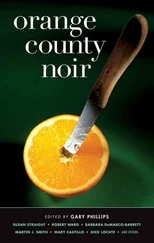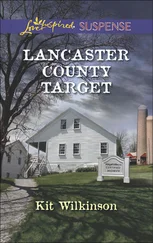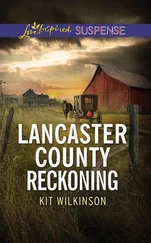The International Wine & Food Society
Established in London in 1933 by renowned wine connoisseur and gourmet, André Simon, The International Wine & Food Society (IWFS) now has 140 branches in 33 countries, from Los Angeles to London, Bangkok to Bombay, with over 6,000 members spanning the globe.
Society members meet regularly to share their passion for good food and wine. As a member of a branch you are part of a team and the events organised are many and varied. You can push the boundaries trying new experiences, whether they are tastings hosted by experts, lunch at a local culinary school or dinner at an exciting new restaurant.
But it doesn’t stop there. As part of this international organisation there are also many other opportunities. As well as local activities, the Society organises wine and gastronomic tours, publishes an annual vintage guide, monographs and quarterly newsletters, regionally and internationally, as well as many other dining and travel related benefits. You are also provided with the name of a member from every one of our worldwide branches, so you have a contact almost everywhere you travel.
The Society operates in three zones – the Americas, Europe Africa and Asia Pacific. Visit our vibrant website and click on “your” zone. Locate a branch near you, look at upcoming events, view previous newsletters or visit our Blog to find out more. You could also become an independent member, or even set up a branch of your own. We’ll help you along the way.
As a member of the IWFS the world of food and wine is within easy reach. Join us and embrace it…
To find out more about becoming a member, visit our website www.iwfs.orgor call our international head office on +44 (0)20 7827 5732.
A guide to its regions, wines and foods
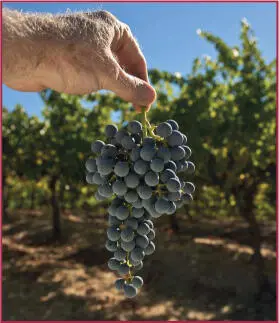
Tina Caputo
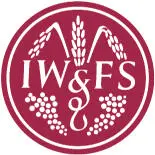
Introduction Introduction Napa might be the first Californian region to spring to a newcomer’s mind, but spectacular terrain, diverse terroirs and a warm welcome make Sonoma the favourite for many When I moved from Michigan to San Francisco 25 years ago, there was only one California wine region I knew anything about: the Napa Valley. Working in upscale restaurants during college had taught me that much. Sure, I had heard of Sonoma, but it was the Mary Ann to Napa’s Ginger; the hamburger to Napa’s filet mignon; the shelter mutt to Napa’s show dog. After landing a job at the Wine Institute, a lobbying and promotional organisation for the California wine industry, I began to learn about and appreciate Napa’s less-famous neighbour. Touring wineries on weekends, I discovered that Sonoma County had all the rural beauty of the Napa Valley, but with less traffic and a more welcoming, laid-back vibe. Oh, and delicious wine, too! For less money! For a 20-something wine lover with limited funds at my disposal, those were major selling points. When out-of-state friends and family came to visit and asked to see “wine country”, I did my best to steer them towards Sonoma. Sadly, this was something of an uphill battle in the 1990s. Everyone had heard of the Napa Valley and its famous Cabernet Sauvignons and Chardonnays, but Sonoma? Not so much. This was disappointing, but I did not let it deter me. I knew that once they had visited Napa, they would be willing to branch out and give Sonoma a chance. And they did.
Part 1 – History Part 1: History An industry that began with settlers and missionaries, and survived Prohibition and phylloxera, is now responsible for arguably California’s best cool-climate Pinot Noir and Chardonnay Sonoma County’s winemaking history begins in, of all places, Russia. Years before Spanish missionaries began planting vines in the Sonoma Valley, colonists from Russian Alaska settled on the Sonoma Coast. In 1812, they established Fort Ross as an agricultural and hunting base for their settlements back home, and planted Northern California’s first grape vines at the site a few years later. Around 1825, Spanish missionary José Altamira planted vines at the site of Mission San Francisco Solano, near what is now the town of Sonoma. (The town was named for an indigenous word that roughly translates to “Valley of the Moon.”) In 1834, the Mexican government appropriated California’s missions and charged General Mariano Vallejo, California’s military commander, with distributing the land for development. During this period, vine cuttings from the Sonoma mission were used to plant new vineyards throughout the northern California territory. Meanwhile, the Russian settlers expanded their efforts into the Russian River Valley, and continued cultivating vineyards until they left California in 1841. By then, the roots of Sonoma County’s viticulture industry had been firmly established. The next turning point in Sonoma’s vinous history came in 1856. That year, settler Cyrus Alexander planted vines in northern Sonoma County, in the region now known as the Alexander Valley. Also in 1856, Hungarian nobleman Agoston Haraszthy purchased the Sonoma Valley property that would become the Buena Vista Winery. “In 1825, Spanish missionary José Altamira planted vines at the site of Mission San Francisco Solano, near what is now the town of Sonoma”
Part 2 – The wine regions of Sonoma County Part 2: The wine regions of Sonoma County We’ll begin our journey in Northern Sonoma, a vast region that includes such superstar American Viticultural Areas (AVAs) as the Russian River Valley and lesser-known gems such as the Green Valley of Russian River, then head over to Dry Creek Valley, Sonoma Valley and the Sonoma Coast before venturing off to the Fountaingrove District and beyond. Key P = picnic area • F = food pairings • T = tasting toom • * = by appointment AVA = American Viticultural Area ( Sonoma County AVA map )
2.1 Northern Sonoma
• Alexander Valley
• Knights Valley
• Russian River Valleyo
• Chalk Hill
• Green Valley of Russian River Valley
2.2 Dry Creek Valley
2.3 Sonoma Valley
• Sonoma Valley
• Bennett Valley
• Carneros
• Moon Mountain District
• Sonoma Mountain
2.4 Sonoma Coast
• Sonoma Coast
• Fort Ross-Seaview
• Petaluma Gap
2.5 The other American Viticultural Areas
• Fountaingrove District
• Pine Mountain-Cloverdale Peak
• Rockpile
Part 3 – Investing in and ageing wines from Sonoma County
Part 4 – Sonoma County – food and travel
4.1 Edible Sonoma County
• Olive oil
• Dungeness crab
• Cheese
• Liberty Duck
• Gravenstein apples
4.2 City snapshots
• Geyserville
• Healdsburg
• Petaluma
• Sonoma
4.3 Touring Sonoma County’s winelands
• Trip 1: Alexander, Dry Creek and Russian River Valleys
• Trip 2: Moon Mountain, Sonoma Valley and Carneros
Part 5 – Want to find out more?
Sonoma County AVA map
Napa might be the first Californian region to spring to a newcomer’s mind, but spectacular terrain, diverse terroirs and a warm welcome make Sonoma the favourite for many
Читать дальше








